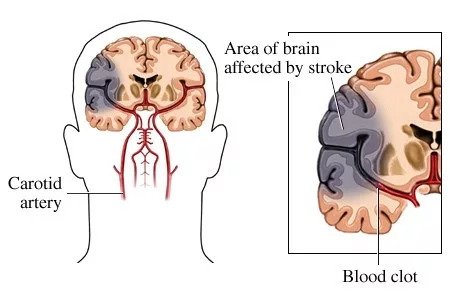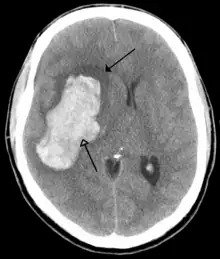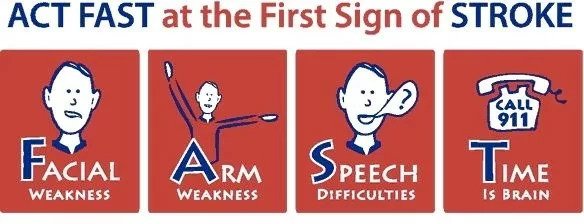The Doc Report - Strokes — Premier
- Category: Conditions
- Posted On:
Joshua Strommen MD FACEP
A cerebrovascular accident (CVA) is also known as a stroke. Worldwide, stroke is the 2nd leading cause of death. Stroke was the 5th leading cause of death in the United States in 2014 behind heart disease, cancer, pneumonia/influenza, and unintentional accidents, respectively. A stroke occurs when blood flow does not reach a certain region of the brain. The lack of blood flow may injure a large area or a small area of the brain, and this variable determines the physical findings we see in a patient having a stroke. There are 2 different types of stroke.
Ischemic Stroke

Ischemic strokes occur 80 – 85% of the time. They occur when an arterial blockage inhibits distal blood flow.
This blockage can be from
- Cholesterol/Fat/Fibrous plaques
- A tear in the artery
- A blood clot that comes from the heart
- A blood clot that forms due to having a genetic clotting disorder
Hemorrhagic Stroke

Hemorrhagic strokes only occur about 20% of the time. Bleeding into the brain (the bright white area in the CT scan above) can be from a ruptured aneurysm, trauma to the head, diseased arteries, or vascular malformations.
When Should You Be Concerned Someone Is Having a Stroke?

What Should You Expect in the ER if Your Family Member Is Having Stroke Symptoms?
- Upon arrival at the Emergency Department, they will immediately get a CT Scan of the brain to determine if there is an ischemic or hemorrhagic stroke.
- There will be an extensive neurological exam to assess the severity and likely location of the stroke.
- There will be blood work done to help determine other potential causes of the stroke.
- Treatment options will be discussed at that time, usually in consultation with a Neurologist.
What Are the Treatment Options for Stroke?
It depends on the cause, but generally….
- Thrombolytics – “Clot buster”
- This is for an ischemic stroke. It is very controversial, and doesn’t decrease the likelihood of dying from the stroke, but may help recover some function.
- Surgery
- Hemorrhagic strokes may need to be removed from the blood that is collecting in the brain.
- Ischemic strokes can sometimes be treated by removing the blood clot with vascular surgery.
- Observation/Physical Therapy
- Sometimes, there is no benefit of intervening with surgery or thrombolytics and the effects of the stroke will remain. Different forms of therapy are usually utilized to help recover strength and function.
What Increases Your Risk of Having a Stroke?
- High Blood Pressure
- Diabetes Mellitus
- Smoking
- High Cholesterol/Triglycerides
- Atrial Fibrillation
Having a stroke can be a devastating event and it is one of the most morbid conditions you can have. It is a condition where you can modify your risk by controlling blood pressure, regulating your diabetes, and not smoking. In the event you have a stroke, there are various therapies possible, but you need to get to a hospital as soon as you can because the longer you wait the less likely the treatment may work. At PremiER we have the ability to diagnose an acute stroke and get you to the nearest stroke center for optimal therapy.
